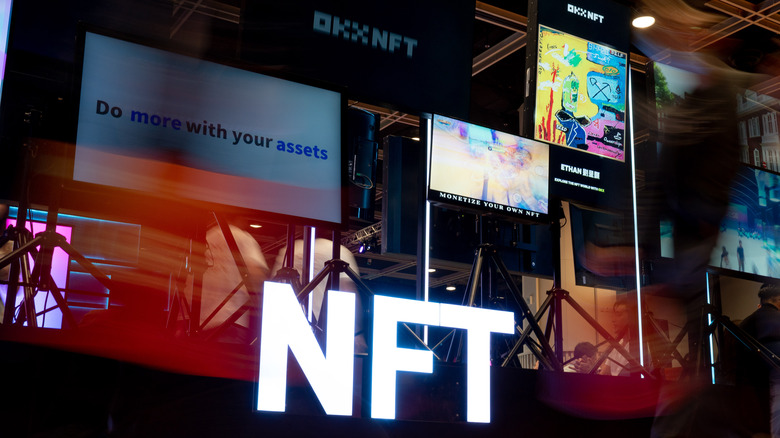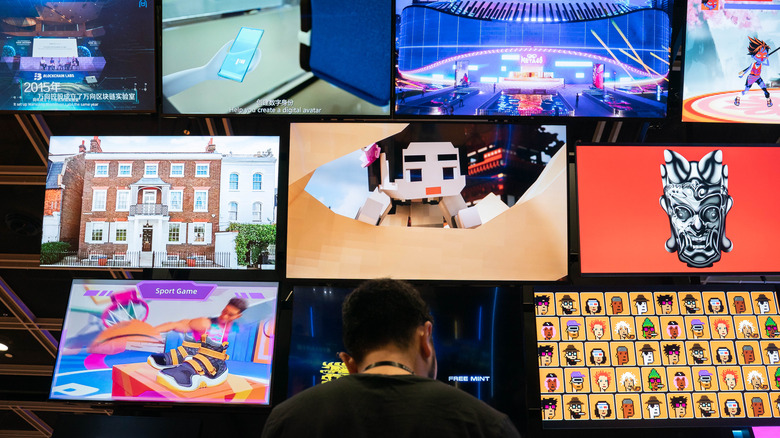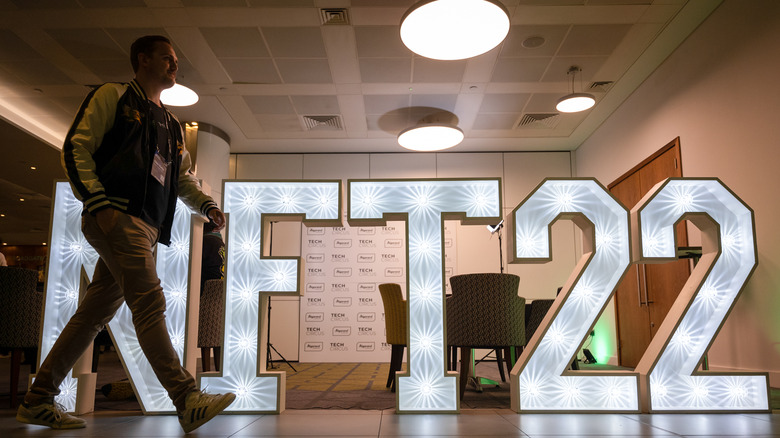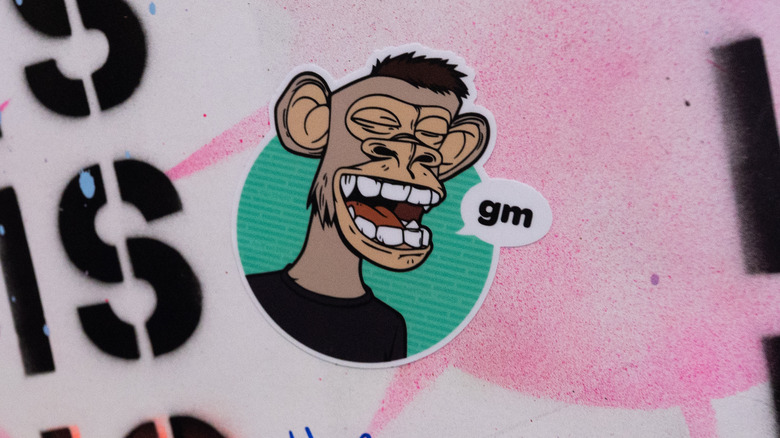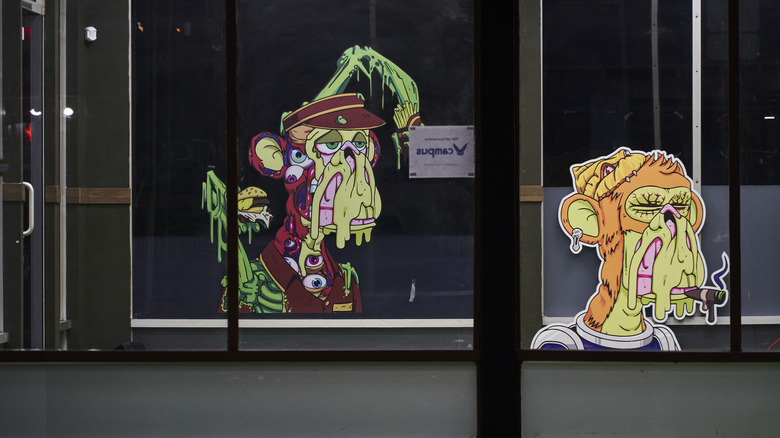What Happened To NFTs? The Crypto-Collectible Phenomenon Explained
For much of the COVID-19 pandemic until very recently, there was a new, jargon-laden product category dominating news headlines: NFTs. What exactly they were was rarely explained particularly well, past that they somehow used blockchain technology to allow artists to sell limited-edition digital goods. Before long, NFT sales were booming, with all sorts of speculators buying them as investments. For the most part, though, the average person was left shaking their head, wondering what the heck this thing actually was and why everyone was talking about it.
By the end of 2023, the bloom was clearly off the rose: NFTs had been a speculative bubble, and that bubble had burst. The value of once-popular NFTs had plummeted, leaving those who weren't the earliest adopters with a peculiar bad investment that amounted to little more than a digital receipt that included a link to an image or other kind of media file. The ones that catch the eye of the traditional art world might still have some value, but the rest? Good luck getting your money back from selling those NFTs. So, if you'd like to learn more about how the NFT bubble kept growing until it finally burst, read on to find out.
What are NFTs in the first place?
Explaining what NFTs are — "NFT" is short for "non-fungible tokens" — in the first place isn't necessarily that complicated so much as it can be tricky to understand why they specifically were ever considered something of value. Speaking broadly, the idea is essentially using the blockchain as a verification system to allow the sale of digital goods as limited edition collectibles. As crypto and the blockchain, in general, were blowing up a few years ago, so did NFTs to an absurd degree. All of this despite it being clear to those outside the bubble that this was not a sustainable movement.
A big reason for that? NFTs are basically metadata and little more. In practice, many were effectively links to image files, image files that could go away if the NFT marketplace hosting them did. Just look at how Chainstack, a blockchain hosting provider, describes how a band could release a new album and bonus content as a limited edition NFT. "[H]ere's what you'll need for an adequate music NFT release: Cover[,] Audio file[,] Video link (optional)[,] Lyrics (optional)[, and a] Web2 reseller link (optional)." Other than being tied to the blockchain to create artificial scarcity, how is any of that different from the digital album releases that bands have been doing for decades?
Overall, you have an incredibly confusing product that isn't going to appeal to the masses. Despite this, NFTs were the subject of wall-to-wall positive media coverage, framing it as the center of "Web3" in the same way that social media and user-generated content were "Web 2.0."
The rise of NFTs
On some level, it was fortunate for NFT makers that COVID-19 lockdowns started right around when the mainstream push for NFTs commenced. Even setting NFTs aside for a moment, one industry that boomed was the collectibles market, particularly concerning pop culture collectibles like vintage comic books, action figures, and even celebrity autographs, which had largely been replaced by selfies.
"Collecting provides solace and structure, and ways that we can still be productive doing something we can enjoy," explained Dr. Shirley Mueller MD, a psychiatrist and the author of "Inside the Head of a Collector: Neuropsychological Forces at Play," in a November 2020 Smithsonian Magazine article. "Collecting is also about control. We can control our collections. We can't control Covid." With physical collectibles booming, why shouldn't the same apply to digital collectibles if someone found a way to make them work?
It helped that many large media outlets were all too willing to help hype NFTs, with a September 2022 Vanderbilt University study noting that of the 26,000 NFT-centric articles included in their database, 3,000 were from Q1 2021, and a whopping 12,000 more were from Q4 of the same year. "If the news media are primarily hyping NFT markets, you should see a positive relation between NFT news and NFT volatility and returns," explained study author Prof. Joshua White. "If the media are educating market participants, then seller returns and price swings should decline because new buyers are better informed."
How did the NFT bubble burst?
As is typical of speculative bubbles, the NFT bubble started to burst in large part because supply was greatly outstripping demand. "Everybody spun up an NFT for their own project," said University of Buffalo professor and blockchain expert Bina Ramamurthy in a December 2023 Money.com article. Before long, "nothing [was] special about it anymore."
Case in point: The Bored Ape Yacht Club NFTs, the series of vaguely amusing anthropomorphic ape drawings that are probably more closely associated with the NFT boom than any other work. According to a November 2023 BBC article, the bottom price for NFTs in that series dropped about 79 percent in a year and a half, from approximately $268,000 to roughly $56,000.
"I haven't really wanted to sell, but the market is really bad, so it's the smart thing for me to do. I think the NFT market could even go lower," collector Taylor Whitley told the BBC in the same article, explaining how he had to sell six of his seven Bored Ape NFTs to avoid taking a bath on them financially. If he had sold at the peak, he would have made ten times what he eventually pulled in, though he did buy in early enough to profit.
What's next for NFTs?
It's not as if NFTs are going to go away forever. There are obviously people who want to get some kind of return on their investments, even if they end up losing money in the end, and in the world of expensive artwork, there will continue to be people who will collect NFTs the same way they would physical pieces of art. But the era of mass media bombarding you with NFT stories and the average person having NFTs constantly promoted to them is almost surely over and done with.
So maybe, if an artist has a following and their work commands high dollar amounts, they might still benefit from selling their work digitally as NFTs, especially if they did the work in the digital domain in the first place. But NFTs from sports leagues selling highlight clips, like the Ultimate Fighting Championship minting an NFT of Francis Ngannous knocking out Stipe Miocic to win the heavyweight title? New NFTs of that ilk are probably never going to show up. What exactly are you even taking ownership of when you buy an NFT like that?
The bubble has burst; let's just be grateful for that.
